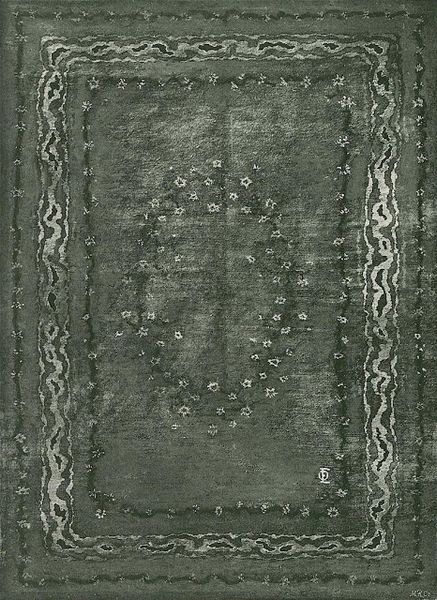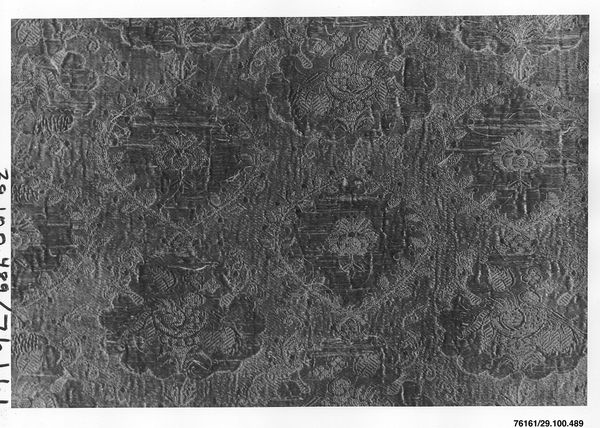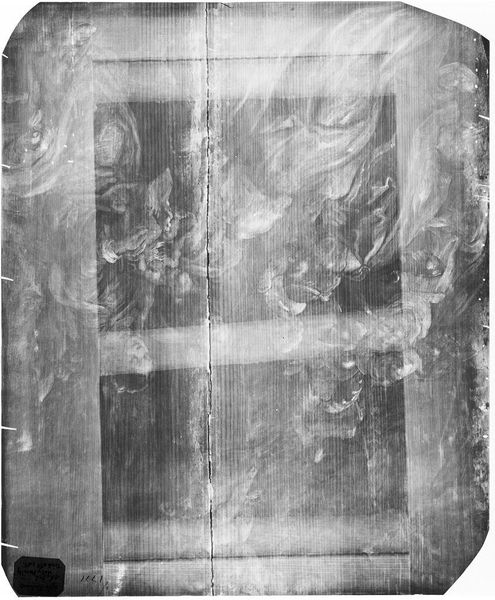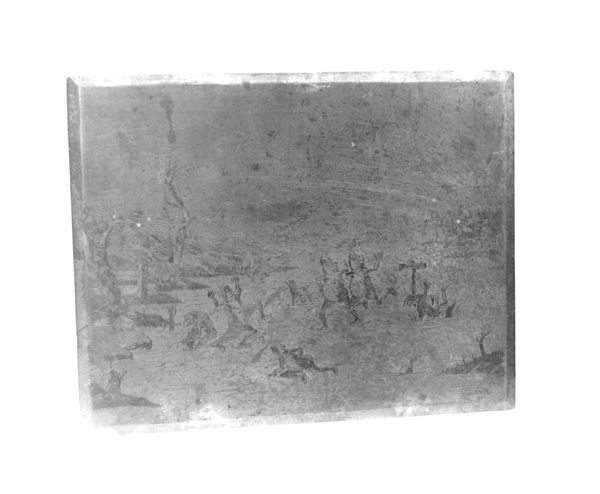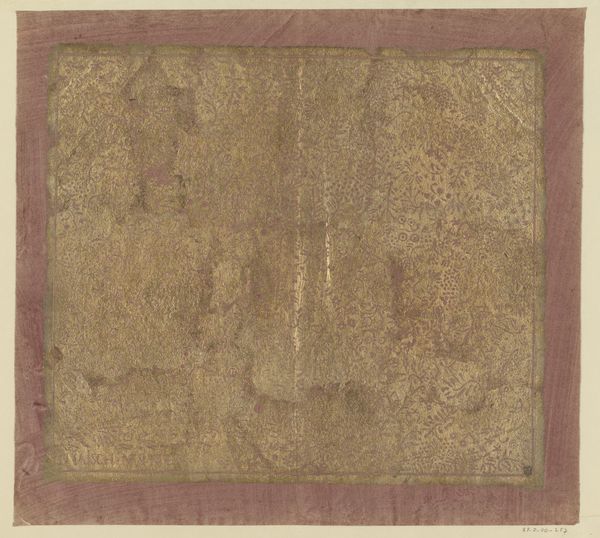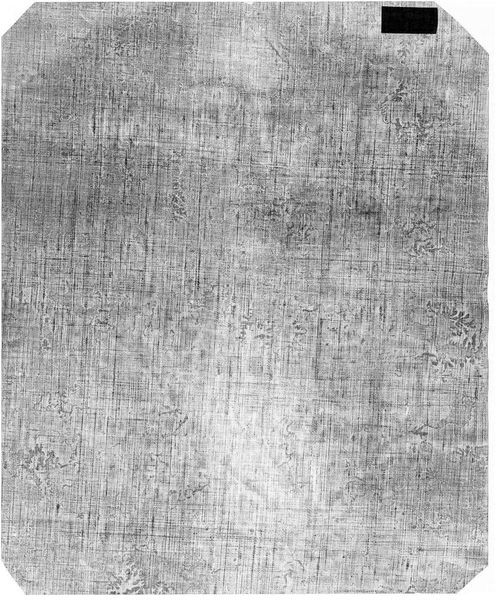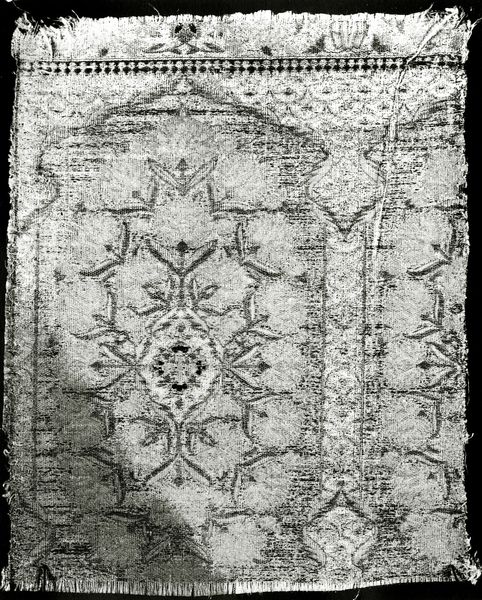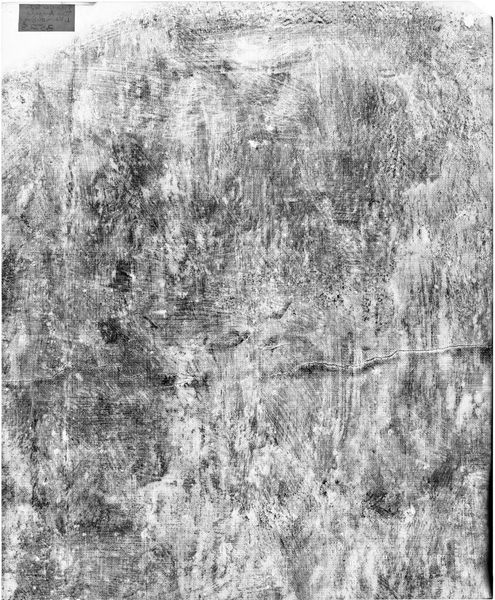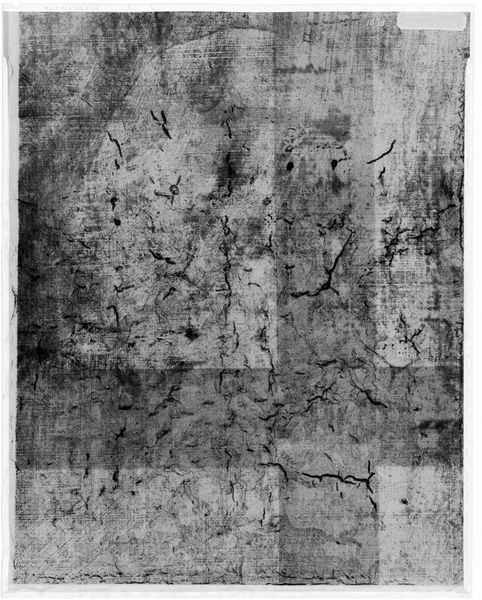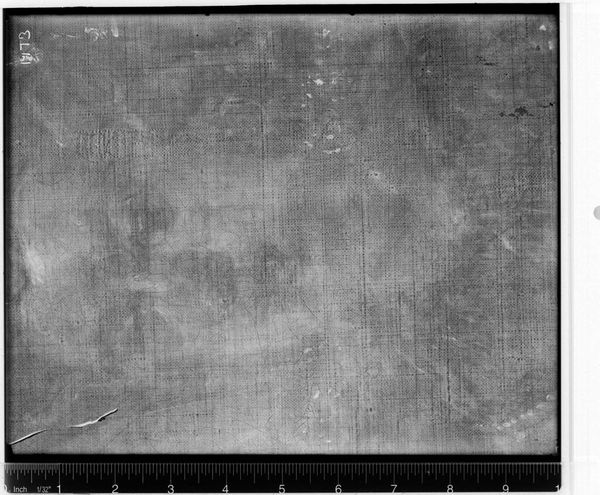
fibre-art, weaving, textile
#
fibre-art
#
narrative-art
#
textured
#
asian-art
#
weaving
#
landscape
#
textile
#
decorative-art
Dimensions: 294.3 × 209.5 cm (115 7/8 × 82 1/2 in.)
Copyright: Public Domain
Curator: Here we have an exquisite example of Indo-Portuguese textile art: a bedcover dating from the late 17th century. Editor: It’s breathtaking! So dense with imagery, a real feast for the eyes. I feel immediately drawn into this narrative world. Curator: Absolutely. What's compelling is how this weaving, a utilitarian object really, transcends its function through such meticulous artistry. Think of the sheer labor involved in creating such a complex pattern using fiber. Editor: The pattern is mesmerizing! Do you see all the figures? The way animals and humans are interwoven... I wonder what kind of story this imagery hints at? Curator: Well, we know these bedcovers were often commissioned by Europeans living in India. The iconography likely represents a fusion of local Indian motifs adapted to European tastes. The hybridity on display! Editor: Hybridity is key. Note the heraldic elements combined with indigenous flora and fauna. It is fascinating how symbols traditionally associated with power and nobility are recontextualized in this distinctly Asian setting. Perhaps to demonstrate trade or intermingling? Curator: Possibly a demonstration of global commerce. But I think it’s vital to also see this within the context of the cottage industries that emerged at the time; how colonized spaces allowed for production of goods geared towards a very specific, usually European, consumer base. Editor: Indeed, the global perspective is significant, influencing iconography. The visual vocabulary feels almost encyclopedic in its ambition. Curator: But it is a vocabulary embedded within the cloth itself, rendered through laborious processes of production. Who made it? How were they compensated? How did their own visual vernacular seep into designs created for the colonizer? It raises significant questions about authorship and ownership. Editor: I see what you mean. It's tempting to focus solely on decoding the iconography, but that perspective, as you said, is equally crucial to how one must view it! This textile really provides so much for study from differing points. Curator: Precisely, It becomes a tangible testament to that meeting—and also those transactions. It speaks to the exchange, appropriation, and transformation of materials, labor, and visual languages across cultures. Editor: And through close visual readings combined with diligent historic perspective, as the viewers, we’re able to gain at least a glimpse into a bygone world, now faded. Curator: Let’s hope such analysis creates space to understand better and respect these relics, and their circumstances in material origin.
Comments
No comments
Be the first to comment and join the conversation on the ultimate creative platform.
